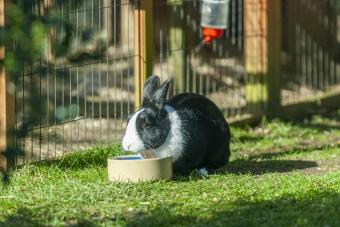
Unlike some other rabbit breeds, Netherland Dwarf rabbits have not been genetically altered through improper breeding practices to be smaller. They are inherently small due to a dwarf gene. The Netherland Dwarf rabbit is one of the smallest rabbit breeds, making them popular as pets. With proper care, these rabbits can thrive in an indoor environment.
Origin and History
In the 1880s, it was discovered that some Dutch rabbit litters in England included mutations resulting in different body styles and eye colors. Their bodies were small and short, and they were white with red eyes. The rabbits were shipped to Germany, where the breed's first standard was established.
This standard was comparable to the American Rabbit Breeders Association standard for Netherland Dwarfs in the modern era. To create additional color patterns, white rabbits were selectively bred with wild rabbits. The hues, however, did not last, and within a few generations, the bunnies returned to being white with red eyes. The breed was known as "Hermelin" and remained predominantly white until the 1930s.
This breed was provided with a standard in 1940, but World War II stopped their progression. Following the war, Joyce Taylor co-founded the Netherland Dwarf Club of England in 1949 with nine Netherland Dwarf rabbits. Around 1965, the breed arrived in the United States. Breeders have continued to improve and contribute to the breed ever since.
General Characteristics
This rabbit is well-known for their appearance as they grow older. They are known to retain their baby-like features even as an adult, making them even more enticing as a rabbit to be kept at home as a pet. Prior to jumping into rabbit ownership though, you must first understand how to best care for the breed.
Appearance
The Netherland Dwarf Rabbit has a short, compact body with short legs and shoulders that are the same width as their hindquarters. Their large, round head is close to the body with ears around 2 inches long.
The ideal weight, according to the breed standard, is to 2 pounds or less, but if you are getting one of these rabbits to keep as a pet, it may weigh a bit more. Most Netherland Dwarfs stay well under 3 pounds. There are 25 different varieties of coloring that are separated into groups: self, shaded, agouti, tan, and other. Examples of colors include white blue-eyed, lilac, chocolate, sable point, opal, otter, and Himalayan.
Temperament and Personality
There isn't exactly a "one size fits all" temperament profile for this particular rabbit. The temperament of the rabbit is best determined by discussing their parents, and the individual rabbit, with the breeder. There are many that are loving and affectionate; however, there are others that could be on the more timid end of the spectrum.
These rabbits enjoy company, so bringing at least two home is recommended. Bonded pairs are more likely to be happy and healthy than those that are alone, especially if you aren't going to be regularly providing entertainment. Just be aware that keeping two bunnies of the opposite sex will likely lead to frequent litters of baby bunnies, so plan to have one or both or your pets fixed if you don't want to breed them.
These rabbits are intelligent and can be trained to use a litter box, although they should be caged when not supervised to prevent them from chewing items they shouldn't and prevent damage to your home.
Health Concerns
Similar to other rabbits, the Netherland Dwarf is at risk of developing ear mites, gastrointestinal stasis, and uterine cancer. However, this rabbit is more susceptible to certain conditions than other breeds, including:
- Malocclusion: Although all rabbits are at risk of developing this condition, it is more prevalent in this breed.
- Respiratory Conditions: This breed has a smaller nose and mouth, making them more susceptible to respiratory infections and heatstroke.
As with other animals, your rabbit's susceptibility to illnesses or conditions is determined by their genetics, care, and habitat. Appropriate care can assist in lowering risks that are not genetic.
Exercise Requirements
Even though Netherlands are easygoing, they are an active breed that requires a lot of exercise. If their habitat is not sufficient for them to run in, they should be permitted outside of their cage for at least one hour per day while supervised.
Lifespan
The Netherland Dwarf rabbit has an average lifespan of 10 years, provided they are properly cared for and do not develop serious health conditions.
Purchasing or Adopting a Netherland Dwarf Rabbit

Netherland Dwarf rabbit breeds can be found for sale by breeders using the rabbit breeders directory. Cutest Bunnies offers baby Netherland Dwarf Rabbits for sale to good homes. You may also elect to look around your local area and ask co-ops, farms, or agricultural programs if they have any up for sale. If you are leaning more toward adoption, PetFinder lists rabbits regularly, although they may be a mixed breed. You can also search the following rabbit specific organizations:
- Long Island Rabbit Rescue: Located in Long Island, New York, this nonprofit rescue locates and rehomes rabbits of all breeds.
- Beloved Rabbits: A nonprofit with spayed or neutered rabbits available for re-homing.
- Baby Blue Bee Bunnies: This organization offers bonded pairs, singles, seniors, and rabbits with special needs for adoption to suitable homes.
Is a Netherland Dwarf Right for You?
Netherland Dwarf rabbits keep the appearance of a baby even into adulthood, and they are easy to train and often docile. With the proper care and appropriate feeding, this rabbit could be a good companion for your family for many years to come.







